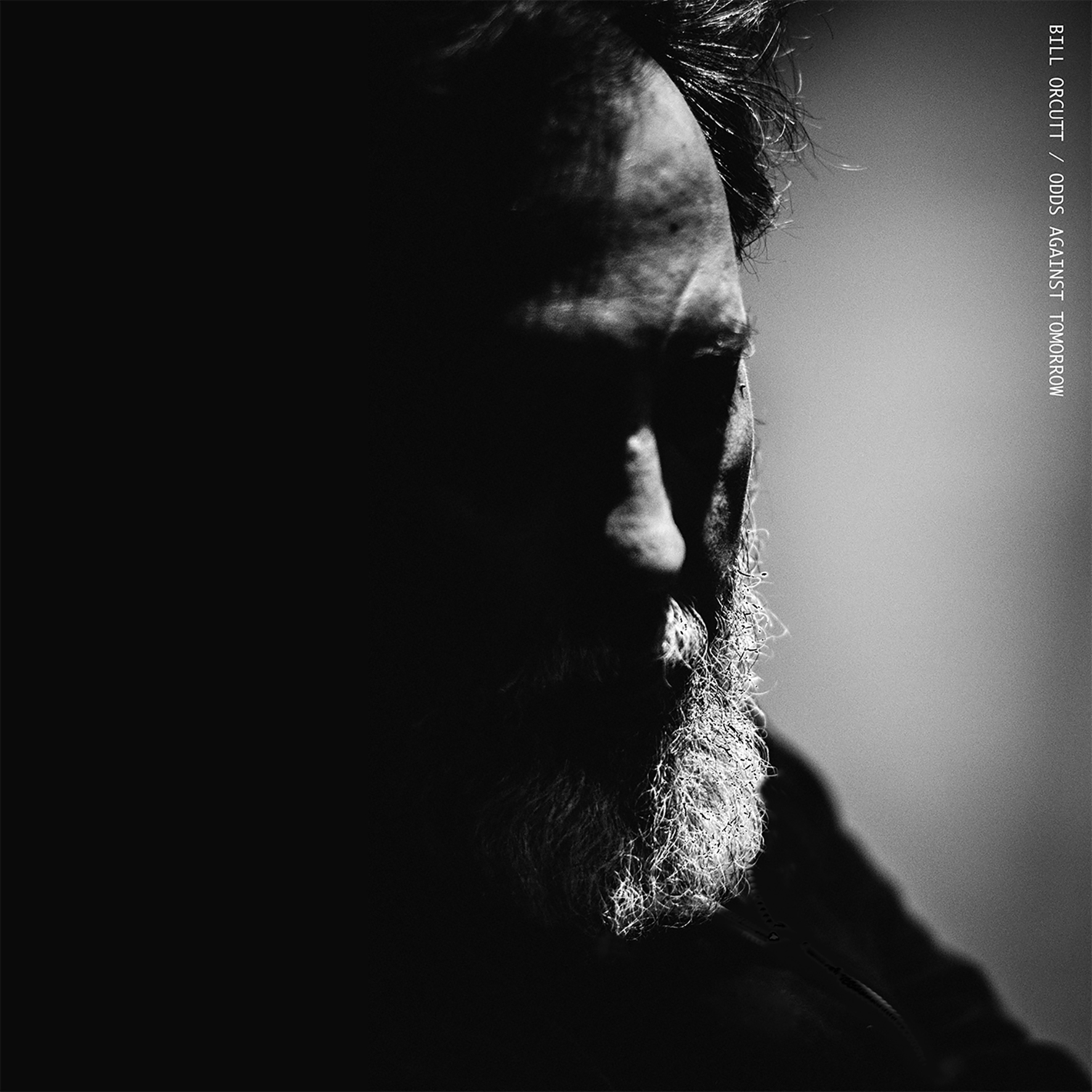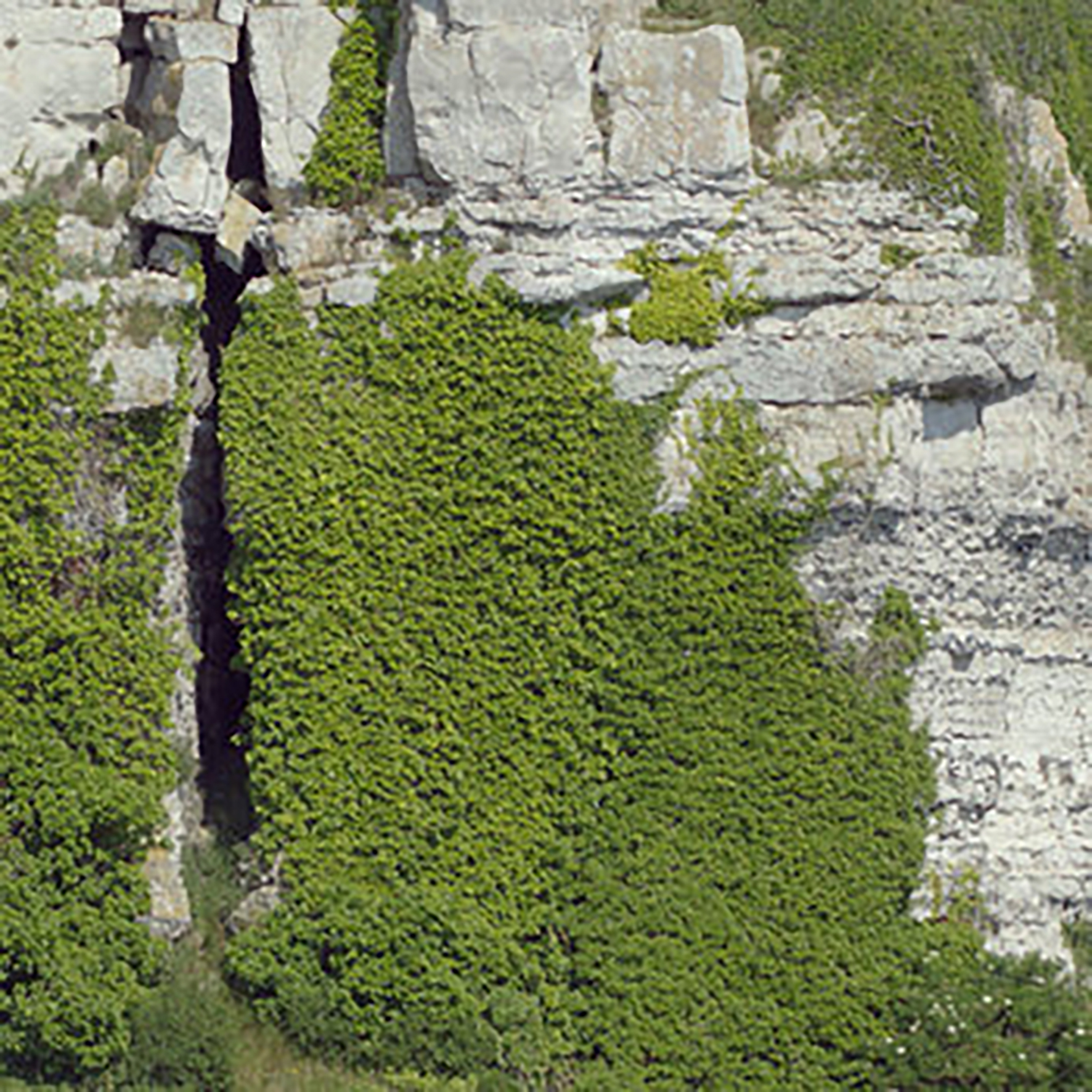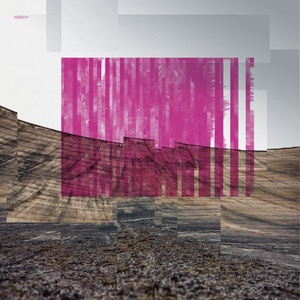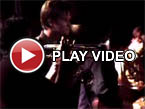 Bill Orcutt's career admittedly had quite an abrasive and chaotic start with Harry Pussy, but it has always been abundantly clear that he is one of the more idiosyncratic and explosive guitar stylists on the planet. It was not until he started releasing solo albums, however, that I began to feel like he was some kind of outsider genius rather than a room-clearing noise maniac (though I imagine it was impossible to convey any emotion more subtle than "baseball bat to the face" with a human volcano like Adris Hoyos behind the drum kit). In any case, Orcutt's late-career shift to more intimate, melodic material has been nothing short of a revelation and 2017's self-titled studio album was the brilliant culmination of that evolution. With this follow-up, Orcutt occasionally hits some similar highs, but Odds Against Tomorrow is more of an intriguing transitional album or lateral move than another instant classic, as he mostly dispenses with playing standards to focus on his own compositions and some very promising experiments with multi-tracking.
Bill Orcutt's career admittedly had quite an abrasive and chaotic start with Harry Pussy, but it has always been abundantly clear that he is one of the more idiosyncratic and explosive guitar stylists on the planet. It was not until he started releasing solo albums, however, that I began to feel like he was some kind of outsider genius rather than a room-clearing noise maniac (though I imagine it was impossible to convey any emotion more subtle than "baseball bat to the face" with a human volcano like Adris Hoyos behind the drum kit). In any case, Orcutt's late-career shift to more intimate, melodic material has been nothing short of a revelation and 2017's self-titled studio album was the brilliant culmination of that evolution. With this follow-up, Orcutt occasionally hits some similar highs, but Odds Against Tomorrow is more of an intriguing transitional album or lateral move than another instant classic, as he mostly dispenses with playing standards to focus on his own compositions and some very promising experiments with multi-tracking.
Two new shows just for you. We have squeezed out two extended release episodes for this weekend to get you through this week. They contain mostly new songs but there's also new issues from the vaults. The first show features music from Rider/Horse, Mint Field, Robert Aiki Aubrey Lowe, Anastasia Coope, ISAN, Stone Music, La Securite, Bark Psychosis, Jon Rose, Master Wilburn Burchette, Umberto, Wand, Tim Koh, Sun An, and Memory Drawings. The second episode has music by Laibach, Melt-Banana, Chuck Johnson, X, K. Yoshimatsu, Dorothy Carter, Pavel Milyakov, Violence Gratuite, Mark Templeton, Dummy, Endon, body / negative, Midwife, Alberto Boccardi, Divine. Cow in Maui from Veronika in Vienna. Get involved: subscribe, review, rate, share with your friends, send images! |



 Earlier this year, Maurizio and Roberto Opalio debuted an ambitious new phase of their long-running My Cat is an Alien project with Spiritual Noise. Vol. I. Appropriately, this sequel is a continuation of that vein, but there is no such thing as a predictable linear progression in the Opalios' universe: each fresh album is like a veil being pulled back to reveal an otherworldly and deeply hallucinatory vista quite unlike anything anyone else has ever recorded. In fact, this project calls to mind a lonely satellite that just keeps drifting deeper and deeper beyond our solar system, sporadically sending back increasingly haunted and alien images that have no earthly analog. Naturally, music this unapologetically outré is an acquired taste that can challenge even the most adventurous ears, as there are no recognizable reference points or even nods to Earth-bound modality, but the closing "Silver Glimpses of Infinity" is the closest that the duo have come to comparative accessibility in years…probably. It is equally likely that listening to so many MCIAA albums has irrevocably rewired my brain at this point and I am now fully desensitized to the more queasy and reality-dissolving elements of their aesthetic. Either way, it is still quite an amazing piece.
Earlier this year, Maurizio and Roberto Opalio debuted an ambitious new phase of their long-running My Cat is an Alien project with Spiritual Noise. Vol. I. Appropriately, this sequel is a continuation of that vein, but there is no such thing as a predictable linear progression in the Opalios' universe: each fresh album is like a veil being pulled back to reveal an otherworldly and deeply hallucinatory vista quite unlike anything anyone else has ever recorded. In fact, this project calls to mind a lonely satellite that just keeps drifting deeper and deeper beyond our solar system, sporadically sending back increasingly haunted and alien images that have no earthly analog. Naturally, music this unapologetically outré is an acquired taste that can challenge even the most adventurous ears, as there are no recognizable reference points or even nods to Earth-bound modality, but the closing "Silver Glimpses of Infinity" is the closest that the duo have come to comparative accessibility in years…probably. It is equally likely that listening to so many MCIAA albums has irrevocably rewired my brain at this point and I am now fully desensitized to the more queasy and reality-dissolving elements of their aesthetic. Either way, it is still quite an amazing piece. This has been an unusually eclectic and prolific year for Abul Mogard, as he has followed up his first ever remix album (And We Are Passing Through Silently) with his first ever soundtrack album in the form of Kimberlin. On paper, the transition from Mogard’s usual fare into soundtrack territory makes a lot more intuitive sense than turning him loose on deconstructing Äisha Devi jams, but his innovation in bridging that stylistic gulf was a large part of why Passing was such an absolute left-field delight. The pleasures of Kimberlin are arguably bit more modest by comparison, as it falls into more expected aesthetic terrain and feels more like an EP than a full-length (by Mogard standards, anyway). In terms of quality, however, it does not fall at all short of his usual level of sublime mastery, culminating in a final slow-burning epic that can hold its own against any of his previous work.
This has been an unusually eclectic and prolific year for Abul Mogard, as he has followed up his first ever remix album (And We Are Passing Through Silently) with his first ever soundtrack album in the form of Kimberlin. On paper, the transition from Mogard’s usual fare into soundtrack territory makes a lot more intuitive sense than turning him loose on deconstructing Äisha Devi jams, but his innovation in bridging that stylistic gulf was a large part of why Passing was such an absolute left-field delight. The pleasures of Kimberlin are arguably bit more modest by comparison, as it falls into more expected aesthetic terrain and feels more like an EP than a full-length (by Mogard standards, anyway). In terms of quality, however, it does not fall at all short of his usual level of sublime mastery, culminating in a final slow-burning epic that can hold its own against any of his previous work. No one can predict which trends or innovations will shape or define the experimental music of the future, but Emptyset's latest bombshell certainly feels like a gloriously bracing vision of one possible path: Blossoms is an album "generated entirely from the output of a neural network-based artificial intelligence system." While the duo of James Ginzburg and Paul Purgas has always been extremely forward-thinking and experimentally minded, this is the first Emptyset album where it seems like the pair has actually leapt several years ahead of everyone else rather than merely taking existing ideas to unexpected (and sometimes fascinating) extremes. That said, Blossoms is also a culmination of the same themes that have obsessed Emptyset for years, as the source material comes from recent acoustic improvisations with materials like wood and metal as well as their backlog of more architecturally inspired recordings (though it all ultimately emerges in radically unrecognizable form). At its best, Blossoms sounds like little else that I have ever heard, evoking a kind of visceral, shape-shifting sci-fi nightmare.
No one can predict which trends or innovations will shape or define the experimental music of the future, but Emptyset's latest bombshell certainly feels like a gloriously bracing vision of one possible path: Blossoms is an album "generated entirely from the output of a neural network-based artificial intelligence system." While the duo of James Ginzburg and Paul Purgas has always been extremely forward-thinking and experimentally minded, this is the first Emptyset album where it seems like the pair has actually leapt several years ahead of everyone else rather than merely taking existing ideas to unexpected (and sometimes fascinating) extremes. That said, Blossoms is also a culmination of the same themes that have obsessed Emptyset for years, as the source material comes from recent acoustic improvisations with materials like wood and metal as well as their backlog of more architecturally inspired recordings (though it all ultimately emerges in radically unrecognizable form). At its best, Blossoms sounds like little else that I have ever heard, evoking a kind of visceral, shape-shifting sci-fi nightmare. The downside to releasing a beloved and perfectly distilled EP like The Garden is that there will eventually have to be a follow-up to it and people will expect it to be every bit as good (if not better) than its predecessor. That is an unenviable level of creative pressure to be confronted with, but Carla dal Forno seems to have passed through it with grace and aplomb (and even managed to start her own record label along the way). To her credit, dal Forno was not at all interested in making The Garden II, though her subsequent cover album (Top of the Pops) seems to have provided a rough template, as she has clearly been thinking a lot about what goes into constructing a good and memorable pop song. Having internalized that, she then wrote a bunch of her own. In a broad sense, it is very apparent that dal Forno is heavily influenced by the classic minimalist post-punk/indie pop of Young Marble Giants and AC Marias, but the best songs on Look Up Sharp feel like an inspired update rather than a loving homage, as she strikes a truly elegant balance of pared-to-the-bone starkness, muscular bass riffs, casual sensuousness, and understated experimentation.
The downside to releasing a beloved and perfectly distilled EP like The Garden is that there will eventually have to be a follow-up to it and people will expect it to be every bit as good (if not better) than its predecessor. That is an unenviable level of creative pressure to be confronted with, but Carla dal Forno seems to have passed through it with grace and aplomb (and even managed to start her own record label along the way). To her credit, dal Forno was not at all interested in making The Garden II, though her subsequent cover album (Top of the Pops) seems to have provided a rough template, as she has clearly been thinking a lot about what goes into constructing a good and memorable pop song. Having internalized that, she then wrote a bunch of her own. In a broad sense, it is very apparent that dal Forno is heavily influenced by the classic minimalist post-punk/indie pop of Young Marble Giants and AC Marias, but the best songs on Look Up Sharp feel like an inspired update rather than a loving homage, as she strikes a truly elegant balance of pared-to-the-bone starkness, muscular bass riffs, casual sensuousness, and understated experimentation. On their second album, Schnitt (the duo Moritz Illner and Markus Christ) arrange distinct units of brass, silence, scratchy art-installation noise and sparse deep bass into a tuneful, compelling post-rock collage. Given that Illner’s sole instrument is a vinyl record-cutting machine it is perhaps remarkable that Wand is so musical. Via headphones the dynamics of this recording come alive, and I love that nothing is overdone or (10 tracks in 27 minutes) overlong.
On their second album, Schnitt (the duo Moritz Illner and Markus Christ) arrange distinct units of brass, silence, scratchy art-installation noise and sparse deep bass into a tuneful, compelling post-rock collage. Given that Illner’s sole instrument is a vinyl record-cutting machine it is perhaps remarkable that Wand is so musical. Via headphones the dynamics of this recording come alive, and I love that nothing is overdone or (10 tracks in 27 minutes) overlong.
 For someone who loves drone as much as I do, I have always had a curiously fragile and shifting relationship with Adam Wiltzie's work and it has only become more so since Stars of the Lid stopped releasing albums. Consequently, Wiltzie's first soundtrack album (2016's Solero) slipped by me unheard, though my longstanding apathy towards film scores as albums may have been an even more significant contributing factor. That is unfortunate, as it turns out that composing for film arguably brings out Wiltzie's best: if the understated radiant drones of late-period Stars of the Lid and the deep melancholia of Winged Victory for the Sullen represent the two poles of his artistry, the score for American Woman lies somewhere in the middle and I quite like it there. Amusingly, that makes this album kind of an exasperating release, as the high points sound like the Stars of the Lid album that I have always wanted: bittersweetly lovely, melodic, and simmering with quiet emotional depth. The catch, of course, is that the soundtrack nature of this album means that it is more of a series of brief vignettes rather than a fresh batch of fully formed compositions to get enveloped in. I suspect that is why Wiltzie is only releasing this album digitally, but there are many appealing glimpses of something more substantial and satisfying flickering within this ostensibly minor release.
For someone who loves drone as much as I do, I have always had a curiously fragile and shifting relationship with Adam Wiltzie's work and it has only become more so since Stars of the Lid stopped releasing albums. Consequently, Wiltzie's first soundtrack album (2016's Solero) slipped by me unheard, though my longstanding apathy towards film scores as albums may have been an even more significant contributing factor. That is unfortunate, as it turns out that composing for film arguably brings out Wiltzie's best: if the understated radiant drones of late-period Stars of the Lid and the deep melancholia of Winged Victory for the Sullen represent the two poles of his artistry, the score for American Woman lies somewhere in the middle and I quite like it there. Amusingly, that makes this album kind of an exasperating release, as the high points sound like the Stars of the Lid album that I have always wanted: bittersweetly lovely, melodic, and simmering with quiet emotional depth. The catch, of course, is that the soundtrack nature of this album means that it is more of a series of brief vignettes rather than a fresh batch of fully formed compositions to get enveloped in. I suspect that is why Wiltzie is only releasing this album digitally, but there are many appealing glimpses of something more substantial and satisfying flickering within this ostensibly minor release. One thing that I have learned time and time again over my years as a Legendary Pink Dots fan is that Edward Ka-Spel's muse is an eternally unpredictable one: wonderful songs can appear anywhere, anytime, and in any shape and high-profile releases are not necessarily always going to be the strongest ones. Nevertheless, The Legendary Pink Dots' recent run of albums on Metropolis has reliably featured some of the band's tightest and most hook-driven songs, which certainly appeals to those fans hoping for a reprise of the band's late '80s/early '90s heyday. I am not sure that I would include myself in that category, as I am quite fond of the band's more hallucinatory and abstract fare, but I do believe that Ka-Spel can be a legitimate pop genius when he is properly inspired and able to rein in his more indulgent tendencies. Happily, this latest release (two years in the making) finds him in especially fine form, offering up an especially concise and focused array of great would-be singles along with some more outré forays into skewed psych-pop experimentation. While I very much enjoyed the more playfully warped side of 2016's Pages of Aquarius, I feel quite confident in stating that Angel in the Detail is the strongest album yet to emerge from the band's Metropolis era.
One thing that I have learned time and time again over my years as a Legendary Pink Dots fan is that Edward Ka-Spel's muse is an eternally unpredictable one: wonderful songs can appear anywhere, anytime, and in any shape and high-profile releases are not necessarily always going to be the strongest ones. Nevertheless, The Legendary Pink Dots' recent run of albums on Metropolis has reliably featured some of the band's tightest and most hook-driven songs, which certainly appeals to those fans hoping for a reprise of the band's late '80s/early '90s heyday. I am not sure that I would include myself in that category, as I am quite fond of the band's more hallucinatory and abstract fare, but I do believe that Ka-Spel can be a legitimate pop genius when he is properly inspired and able to rein in his more indulgent tendencies. Happily, this latest release (two years in the making) finds him in especially fine form, offering up an especially concise and focused array of great would-be singles along with some more outré forays into skewed psych-pop experimentation. While I very much enjoyed the more playfully warped side of 2016's Pages of Aquarius, I feel quite confident in stating that Angel in the Detail is the strongest album yet to emerge from the band's Metropolis era. After a few recent, highly conceptual and very long-form works, Francisco López has gone back to basics with his latest release. Consisting of a single 60 minute piece, packaged in a plain sleeve with the most limited of artwork, he is at his traditional, reductive best. With little information given as to the source material or the strategies used in creating the piece, it emphasizes the sound above all else, and it is another diverse, brilliantly composed piece of art from the legendary composer.
After a few recent, highly conceptual and very long-form works, Francisco López has gone back to basics with his latest release. Consisting of a single 60 minute piece, packaged in a plain sleeve with the most limited of artwork, he is at his traditional, reductive best. With little information given as to the source material or the strategies used in creating the piece, it emphasizes the sound above all else, and it is another diverse, brilliantly composed piece of art from the legendary composer.
